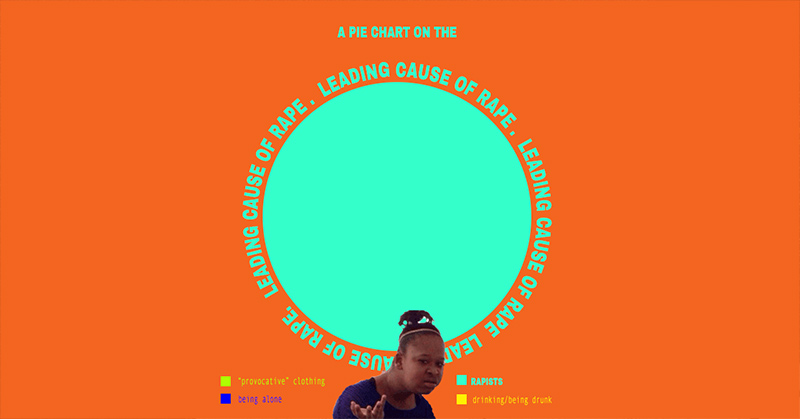“Victim-blaming is not always overt … It’s sometimes expressed in indirect or subtle ways or in the guise of concern.”
Since the birth of Me Too and #BabaeAko, significant progress has been made in the fight against sexual assault, rape victim blaming, and violence. The two movements, echoed by equally powerful dialogues like “Don’t Tell Me How To Dress” and #HijaAko in 2020, have sparked a global reckoning, where there is now an urgent need to take stock of what’s long been going on in entire industries, institutions and nearly every nook and cranny of society.
But the post-#MeToo era face-to-face with the prolonged quarantine period (among other things) has revealed that the work is far from over. “We now have what the United Nations describes as a shadow pandemic happening behind closed doors and in closed spaces,” shares Marla Alvarez, the Diversity and Inclusion Lead of Thomson Reuters Manila. “The UN Population Fund sees that the coronavirus lockdown could lead to up to a 20% surge in domestic violence worldwide as victims remain trapped at home with their abusers and as their movements remain restricted.”
In the Philippines, cases of online child sex abuse have even tripled during the COVID-19 pandemic. “These are criminal acts for which the quarantine provides the perfect cover,” adds Alvarez, also noting the marked increase in reports of sexual harassment and domestic violence with the PNP Women’s Health Desk. “Meanwhile, outside the home, violence against women and children take the form of sexual harassment and rape.”
In the midst of offenses like this, the victims––and not their perpetrators––are still largely held accountable for the crime committed against them.
For Women @ Thomson Reuters Manila, a resource group by and for female professionals that seeks to champion women in the working world and beyond, this is the tip of the iceberg. In a July 2020 panel discussion, they are joined by UP Department of Psychology Assistant Professor Beatriz Torre, who pulls at the common thread that weaves through rape culture, victim-blaming, as well as the larger issues of domestic violence, sexual assault, and sexual harassment in the Philippines.
“Rape victim-blaming occurs when victim-survivors of rape or assault are unfairly blamed for their role in the rape, even to the extent of being held responsible for the crime committed against them.”
– Grubb & Turner, 2012; Harber, Podolski & Williams, 2015
The Thinking Behind Victim-Blaming
Rape and sexual assault victim-survivors are often met with a barrage of questions after coming forward. Famously, “what were you wearing?” is one of them.
While this line of questioning is counterintuitive, UP Department of Psychology Assistant Professor Beatriz Torre points out the need to understand the psychological process that influences people to believe it is appropriate. “Victim-blaming is not always overt or direct,” she explains. “It’s sometimes expressed in indirect or subtle ways or in the guise of concern.”
In these conversations, it is equally important to watch out for red flags such as the “buts,” “howevers,” “if onlys” and “you shouldn’t haves.”
“This language shifts the responsibility on women to think of themselves as potential victims,” adds Torre. “It leads women to always think about how they should escape these situations of vulnerability.”
But why is victim-blaming still so prevalent? According to the Gender and Sexuality educator, there is a need to look at “the predominant social and cultural beliefs about sex and gender, about sexual desire and sexual behavior, about human behavior and about the world in general” to find the answer. Given so many complex and overlapping layers, she calls special attention to three elements: the just-world theory, the traditional narratives about male and female sexuality, and the acceptance of rape myths. All these, she says, should be challenged in every instance they arise.
“In the just-world theory developed originally by Social Psychologist Melvin Lerner, our beliefs about how the world works come into play,” begins Torre. Lerner has found that “on some level, most of us believe that first, the world is fundamentally fair and rational and second, that unfortunate events are related to someone’s prudence, competence and virtue––or lack thereof.” This is where notions of fairness in the universe are factored in, where a human being is programmed to believe in “you get what you deserve” or “good people receive good karma.”
“Hearing that someone has been raped challenges our belief in this just, fair world,” says Torre. “It causes us to feel discomfort and distress.” The reaction of spectators, then, is to dismiss the events that cause these disconcerting emotions––to the point of invalidating the experiences of victim-survivors.
“Blaming the victim allows us to distance ourselves from the victim/survivor and to maintain the comforting belief that the world is fair.”
– Harber, Podolski & Williams, 2015
It is also important to note that society’s narratives about male and female sexuality are at the root of victim-blaming. “Men are established as sexual aggressors,” states Torre. “Women are established as sexual gatekeepers.” In the context of relationships and interactions, where men are painted as always interested in sex and women are meant to resist sexual advances, these oversimplified and stereotypical binary concepts become potentially harmful.
RELATED: Why Do People Think Women Only Drink When They’re Alone/Sad/Looking To Get Some?
Lastly, there is the rape myth acceptance––something widespread but is not actually based on fact––that’s tied closely to rape victim-blaming. This is where comments like “she was asking for it,” “but it wasn’t really rape if they were in a relationship” or “he didn’t mean to do it” come into play. Believing in these myths makes it easier to justify the crime.
“Rape myths are false beliefs that are widely and persistently held and that serve to deny and justify male sexual aggression against women.”
– Lonsway & Fitzgerald, 1994
Torre also makes it a point to bust one especially harmful rape acceptance myth: “Rape is a deviant event.” She sees this as a common cop-out in Philippine society, where the perpetrator is often painted as a monster because of deviant behavior (most often involving drugs or alcohol). “This notion says that rapists are monstrous people and it is the role of women to avoid them,” she explains. “The reality of rape is that it very often happens with people the victim already knows or even has a relationship with.”
The Need for a Shift in Mindset
With these common misconceptions cleared up, the calling then shifts to the individual level: to constantly examine and question one’s own beliefs in gender, sexuality and sexual assault.
Because victim-blaming in itself, on top of the rape experienced by victim-survivors, is a problem that leads to secondary victimization. When these individuals bravely share their story and then are met with judgment, skepticism and being made to feel accountable for a crime they didn’t commit, they recoil and become susceptible to further psychological distress. “This is associated with the under-reporting of rape and assault, which heightens the misperceptions of its impact on victims,” says Torre. “It is estimated that out of the total cases of sexual assault and rape that actually happen, only about 6% are reported.”
Along with the other speakers on the panel, Torre reminds that victim-blaming is a mindset problem that can be nipped in the bud. “We can stand up against this culture by encouraging people to speak honestly about how they feel when they hear about cases rape,” she says. This safe space for honest dialogue is found to give way for emotions that lessen the tendency to blame the victim.
“It’s also important to reexamine the values we teach children––both young girls and boys,” concludes Torre. “How are we talking to kids about consent? Are we teaching them about consent at all?”
RELATED: Will Curing Ignorance Also Cure Apathy?
Art Alexandra Lara


















